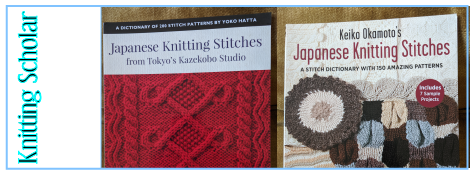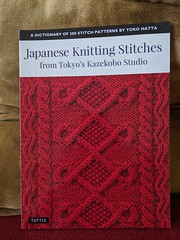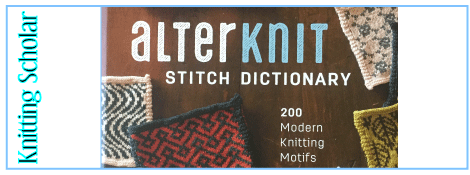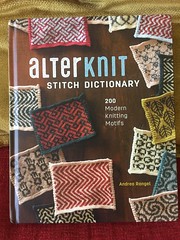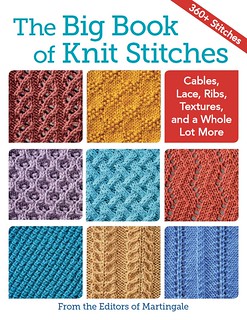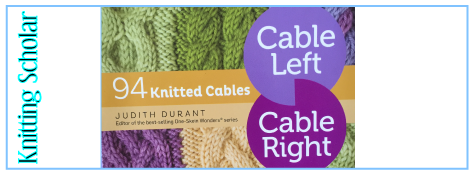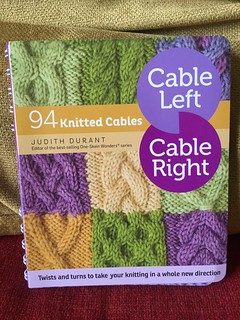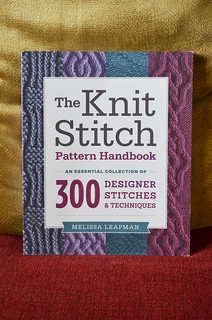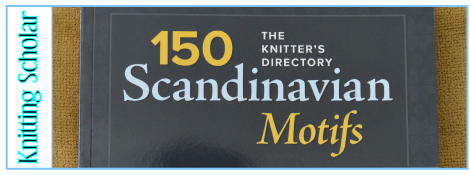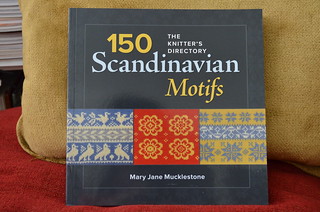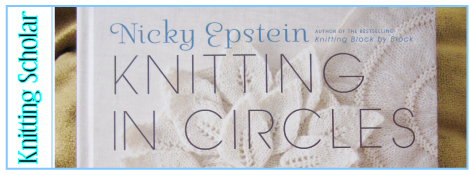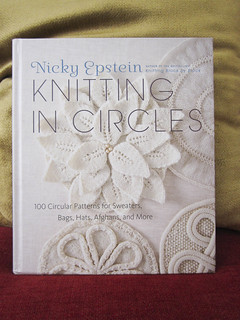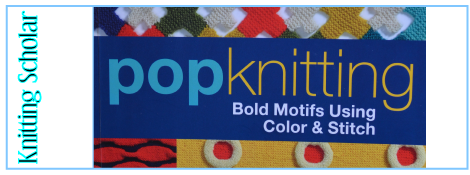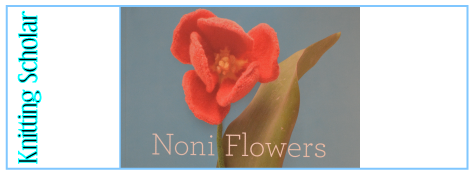Author:Yoko Hatta, (Translated by Cassandra Harada>
Published by: Tuttle Publishing, 2019
Pages: 128
Type: Stitch Dictionary
Title:Keiko Okamoto’s Japanese Knitting Stitches: A Stitch Dictionary with 150 Amazing Patterns
Author: Keiko Okamoto (Translated by Gayle Roehm)
Published by: Tuttle Publishing, 2019
Pages:144
Type: Stitch Dictionary
Both books do have basic Table of Contents, but they’re basically just laying out the techniques. It doesn’t seem strictly necessary to spell them out for you.
The In-Depth Look:
This is a two-fold review, if only because both books arrived at the same time from the same publisher and have so many similarities.
Both books are stitch dictionaries. Both are originally published in Japan (in 2012, I believe), and recently translated into English and published here. (Tuttle Publishing has a great “Books to Span the East and West” program.)
Yoko Hatta’s “Japanese Knitting Stitches” is primarily stitch patterns–200 of them, according to the cover. They’re beautifully photographed and well illustrated via really excellent graphs. The stitches make up about 3/4 of the book, with the back section explaining each symbol with a description of the what exactly you’re supposed to do with each symbol/stitch as you read the graph. There are a handful of project patterns at the back, but the only illustrations of them (so far as I can see) are tiny thumbnail-sized photos in the Table of Contents.
The other book, Keiko Okamoto’s “Japanese Knitting Stitches” is similar in that it is filled with stitch patterns–but they’re different. Rather than just being basic cable, lace or knit/purl patterns, these are a little more enthusiastic in their color and texture–stranded color and bobbles, and open-work. There are more elaborate projects included–only seven of them, but more intricately detailed and photographed. (That Nordic Coat is to die for!)
Both books are fantastic stitch dictionaries. Like all Japanese knitting books, they rely heavily on graphs–don’t expect elaborate written instructions–but how necessary is that, really?
Want to see bigger pictures? Click here

This review copy was kindly donated by Tuttle Publishing. Thank you!
My Gush: So many possibilities to play with!

